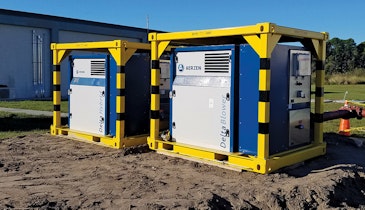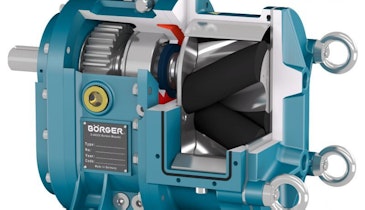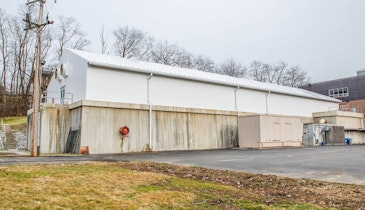When planning new construction, one must consider environmental impact, infrastructure accessibility, cost and future development. Pressure sewer systems offer an alternative sanitary sewer option in challenging environmental conditions where an economic solution is required. In these situations, gravity systems may be impractical, and septic systems may pose a risk to the environment. Pressure sewer systems utilize a network of grinder pumps to transport wastewater through small-diameter pipes to collection and treatment systems.
Both gravity and septic sewer systems require major excavation for installation. Since pressure sewer systems are not limited by gravity, wastewater is pumped through small-diameter pipes that follow the contour of the land. These systems use directional boring to install piping in shallow trenches situated just below the frost line. This allows for a minimal installation footprint and expedites environmental recovery.
With a pressure sewer system, wastewater can be transported several thousand meters and can be discharged at a point of higher elevation. As a result, the need for lift stations can be minimized or eliminated in almost every installation. Since directional boring eliminates the need for large trenches, it is possible to install pipes under existing infrastructure such as roads. This simplifies installation or restoration efforts and costs compared to gravity systems, where existing infrastructure would need to be removed and replaced.
Pressure sewer systems also offer greater accessibility. They are ideal for areas with challenging terrain, such as rocky, hilly or flat regions, where gravity sewers are difficult or impossible to install. Rural communities, in particular, can benefit from pressure sewers due to lower costs and easier maintenance compared to gravity systems, which require expensive lift stations and constant maintenance.
Facilitating community growth
For communities relying on septic systems, pressure sewers provide a viable alternative. Septic systems have a limited life span, and replacing them can be costly. Pressure sewers offer lower installation costs, minimal environmental impact and easier maintenance. These systems typically require fewer tools for repair, reducing long-term operational costs.
Pressure sewers also allow developers to defer upfront costs. Instead of installing a costly lift station, contractors can install low-pressure sewer pipes and delay the cost of grinder pumps until homes are sold. This flexibility enables developers to manage costs better and expand sewer infrastructure in phases as needed.
The ability to continue to tie into existing systems also means that pressure sewer infrastructure can be built out in phases or facilitate future community growth. Large development projects can take several years to complete construction. If using a gravity sewer system, the complete build out of sewer infrastructure must be completed before home construction begins. With pressure sewers, large developments can be broken into many phases that ultimately tie together. This allows a developer to defer costs on longer-term build-oust until they have received revenue from earlier phases.
Pressure sewer systems also help treatment plants manage wastewater loads efficiently. Gravity systems are prone to inflow and infiltration, which increases treatment costs. In contrast, pressure sewer systems eliminate this issue by delivering pretreated wastewater that is easier and cheaper to process.
Overall, pressure sewer systems offer a flexible, cost-effective and environmentally friendly solution that supports future growth and development. They can tie into existing infrastructure, allowing for phased construction and long-term planning. This makes them an ideal choice for new developments and upgrading existing systems.

Crane Pumps & Systems is a leader in wastewater innovation. The company is your trusted partner in wastewater transportation and management, setting the bar higher with each innovation.
937-778-8947 | cranepumps@cranepumps.com | cranepumps.com





